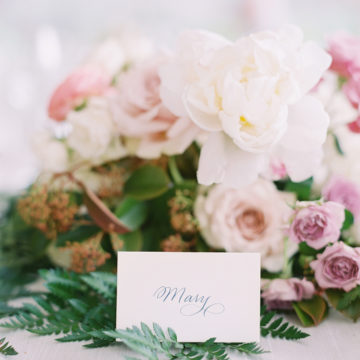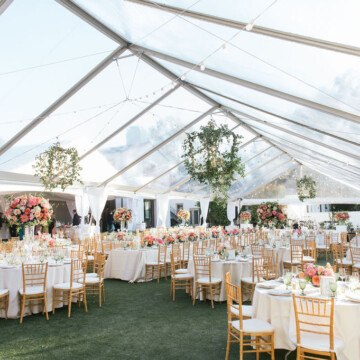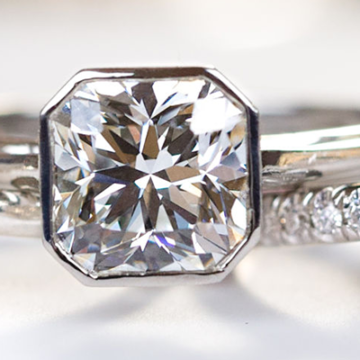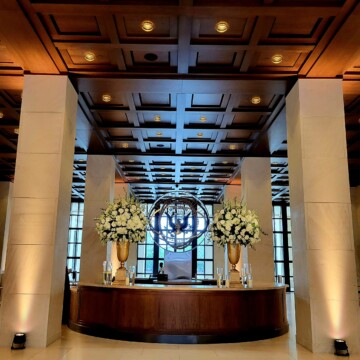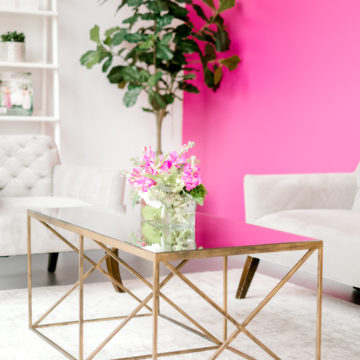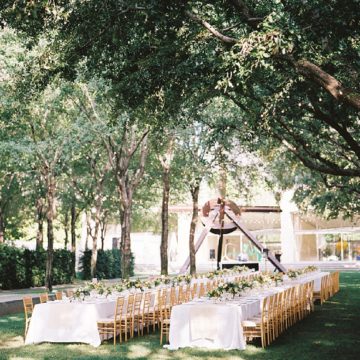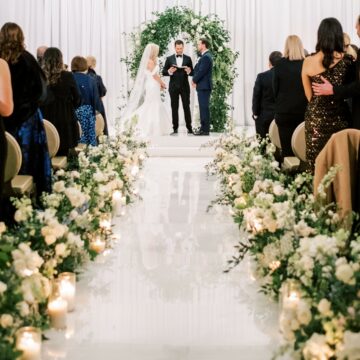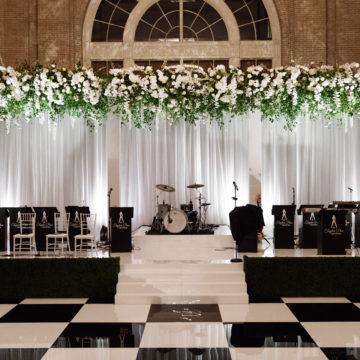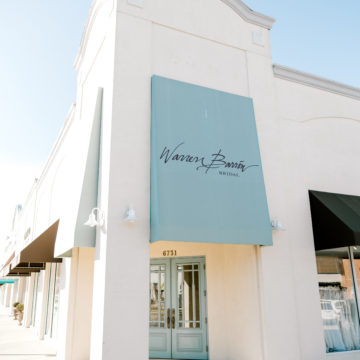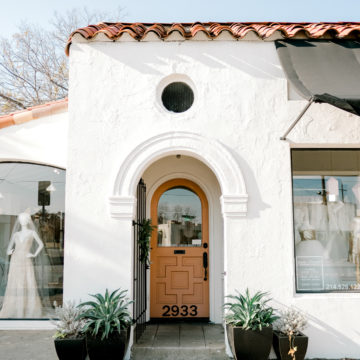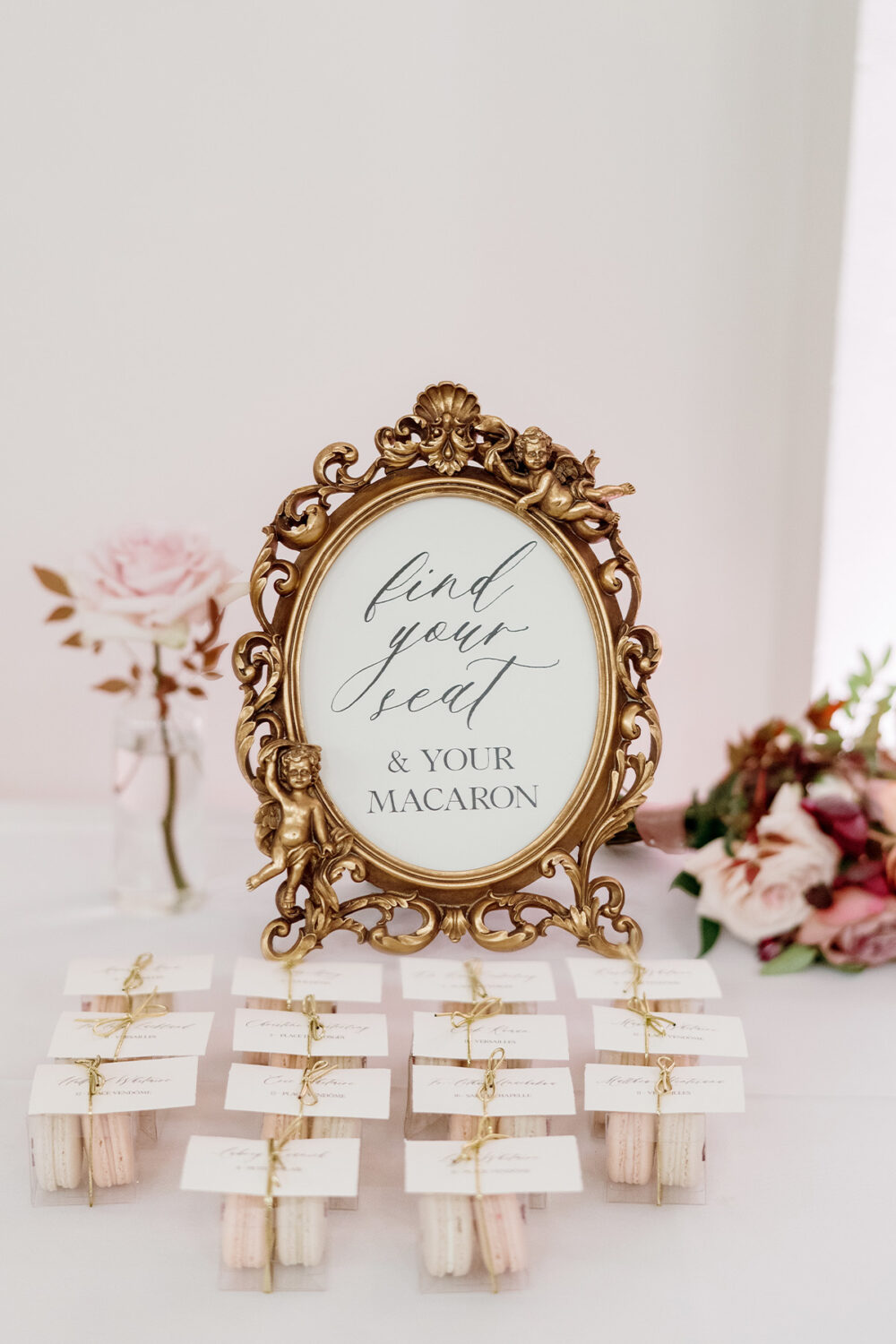
If you have a seated dinner in mind for your reception, consider these tips from Elizabeth Gonzalez, owner of After Yes.
1. Assign Tables
“Do I really need a seating chart?” is a question many brides ask. The answer is: ‘Yes!’ When guests first enter your reception they are looking for direction: “Where do I put my gift, sign in, get a drink, or put my bag?” Minimizing questions makes the transition from ceremony to reception smoother and creates a relaxed environment for your guests.
2. Get Organized
Starting with a well-organized guest list will ease the process. Have separate columns for last name, first name, table number, etc., so the list can be sorted different ways. As your planners, we like to have copies sorted both by table number and last name for quick reference. This comes in handy for last-minute changes. When displaying escort cards, be sure to arrange them alphabetically by last name and allow plenty of space for each one to be easily seen.
3. Wedding Party First
Assigning tables for hundreds of your closest friends and family isn’t easy. Start with your wedding party. We typically see a long head table consisting of the wedding party and their dates, surrounded by a few family tables and then remaining guest tables fill the space from there.
4. Allow for Wiggle Room
The general rule for no-shows and extras is plus or minus 10 percent. A 60-inch round table seats eight to 10 guests comfortably, depending on the type of chair and use of charger or not. A six-foot rectangle table seats six. Each table does not have to have the same number to begin with. You’ll set up based on the “final” list and be prepared for changes. Be sure there is a 5 percent overage for all rentals needed to set the table.
5. Be Flexible
There will always be last-minute changes, no-shows, and extras. Coming to terms with this from the beginning will help your stress level. Call it “final” at a week to three days before the wedding and leave any remaining changes to your wedding planner to handle.


